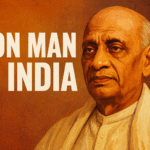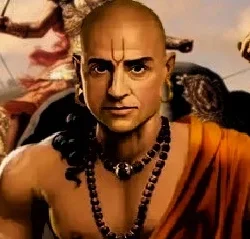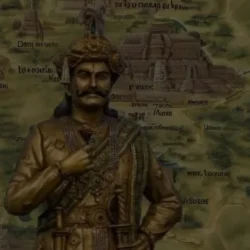Kempe Gowda stands tall in Karnataka’s history as a visionary chieftain, a courageous warrior, and a compassionate guardian of Yelahanka Nadu. He pioneered the formation of Bengaluru, constructed numerous forts, and revolutionized administration. His loyalty to the Vijayanagara Empire and devotion to his people placed him among the empire’s most trusted leaders. The story of Kempe Gowda unfolds with grit, internal family turmoil, political betrayals, fierce wars, and a dream that would one day give the world the city now known as Bangalore.
Early Strength: A Young Kempe Gowda Rises to Power
A Rapid Grip on Governance
Kempe Gowda took charge of Yelahanka Nadu with astonishing speed. Within months, he had tightened his grip on the administration and restored discipline across the region. But his first challenges came not from enemies outside—but from his own family.
The Conflict at Home
His elder brother, Basavegowda, strayed from the righteous path, creating chaos within the palace. Kempe Gowda endured deep frustration but handled the situation with sharp political intelligence, eventually bringing Basavegowda back under control.
In contrast, his younger brother Somegowda was “like Lakshmana”—obedient, loyal, and respectful. With the palace stabilized, Kempe Gowda could finally turn to the greater worries of governance.
Chennamamba: The Courageous Queen Who Steadied His World
A Partner in Purpose
Kempe Gowda’s wife, Chennamamba, played an extraordinary role in his life. She was courageous, devout, and unwaveringly loyal. She managed religious responsibilities, oversaw palace rituals, and ensured that support reached temples, ascetics, and Brahmins—duties that Kempe Gowda himself, burdened with state work, often could not attend to.
Mother, Guide, and Silent Pillar
Her dream was to raise their two sons into worthy leaders. She offered Kempe Gowda a home filled with warmth, even when he returned from battles exhausted and bruised. She became the spiritual backbone of Yelahanka Nadu, ensuring the palace remained a place of harmony amid political turmoil.
Forging Strength: Kempe Gowda the Warrior and Strategist
Building Forts, Armies, and Trust
From the moment he assumed power, Kempe Gowda strengthened his military and governance structures. He built forts across the region, established robust administration, and ensured each stronghold was supplied with soldiers, weapons, and provisions. He established training camps—some warriors there later joined the Vijayanagara army—cementing his reputation as a capable architect of defense and order.
His loyalty and skill impressed Emperor Krishnadevaraya, who often called him to Hampi for confidential discussions on military threats.
Honored by the Emperor
In a grand public ceremony, Krishnadevaraya bestowed upon Kempe Gowda the prestigious title “Raya” and rewarded him with 50,000 gold coins. Kempe Gowda stayed in Hampi for months with his family, enjoying the emperor’s personal hospitality.
A Tour That Shaped a Leader: “If We Sit in the Palace…”
Long before becoming Yelahanka’s ruler, young Kempe Gowda asked his father for permission to travel across the kingdom. His words reveal remarkable insight:
“If we sit in the palace, we will not understand the real world. We must see the people, learn their struggles, and know their pain.”
With his brother, Somegowda, he walked through towns and villages, speaking to farmers, soldiers, merchants, and common folk. He endured hunger, rain, heat, and illness—but the journey transformed him.
He returned with a new understanding of justice, duty, and leadership. His father, Kempenanje Gowda, felt tears well up as he blessed his son.
Dreaming of a Capital: Inspiration from Hampi
During earlier trips to Vijayanagara, Kempe Gowda was mesmerized by the wide, orderly streets of Hampi. This vision inspired his later achievement: designing and founding Bengaluru with planned markets, main roads, and fortifications, mirroring the grandeur he admired in Hampi.
This dream would stay with him through war, betrayal, and loss.
The War in the Arkavati Valley: Two Months of Blood and Fire
A Jealous Chieftain Plots Revenge
The chieftain of Gummanayakanahalli had long envied Kempe Gowda. After Kempe Gowda received honors from Krishnadevaraya, the man’s jealousy turned fierce. He spread rumors, harassed the public, and poisoned minds across Magadi, Huliyur, and Kunigal.
Kempe Gowda ignored the provocation at first, hoping the man would reform. But the chieftain grew bolder.
The Battle Begins
Finally, Kempe Gowda marched to Magadi with his army. Near Tippagondanahalli, as his forces crossed the Arkavati Valley, war erupted. For two relentless months, swords clashed, men fell, and the valley echoed with cries of battle.
Kempe Gowda led from the front, rallying his soldiers with unmatched courage.
In the end, he defeated the chieftain—but hundreds of soldiers died for Yelahanka’s peace.
From this war came the famous saying:
“Sitting, he won Kunigal. Standing, he won Magadi.”
Expanding Control: Kunigal, Huliyur, and the Fall of Fear
After Magadi’s victory, Kunigal fell easily into Kempe Gowda’s hands. Huliyur Durga surrendered when its chief, Giriya Gowda, terrified, prostrated himself before Kempe Gowda and accepted his rule. Countless lives were spared because the enemy chose peace.
The Master of Strategy: Sama, Daana, Bheda, and Danda
Kempe Gowda’s governance rested on four pillars:
- Sama – conciliation
- Daana – offering gifts
- Bheda – sowing division when needed
- Danda – decisive punishment
He used each with precision, subduing rebels and restoring order without needless cruelty. His enemies feared him. His people adored him.
Preparing for War: The Ammunition Factory
The Threat of Jagadevaraya
Channapatna’s chieftain, Jagadevaraya, conspired against Kempe Gowda. The ruler sensed danger immediately and made bold preparations.
He strengthened his army, restructured fort defenses, and—most significantly—established an ammunition factory to produce gunpowder and weapons.
This single move terrified smaller chieftains and secured Kempe Gowda’s military dominance.
The Collapse of a Father and the Burden of a Throne
Kempenanje Gowda, aged and troubled by Basavegowda’s misdeeds and the political conspiracies brewing around his son, grew mentally and physically weak. Soon after, he passed away.
In 1513 CE, Kempe Gowda ascended the throne of Yelahanka Nadu. But grief overwhelmed him. His father’s tender love haunted his memories. It took months before he regained his composure.
Yet challenges stood ready:
Jagadevaraya’s plots.
Ranabhairage Gowda’s scheming.
Administrative instability.
Imperial responsibilities to Vijayanagara.
He faced them all—calmly, bravely, relentlessly
The Betrayal and Redemption of Basavegowda
Basavegowda, misled by Jagadevaraya and Ranabhairage Gowda, declared himself independent and rejected Yelahanka’s authority. Enraged, Kempe Gowda marched toward Shivagange, Channapatna, and Holavanahalli. All three regions fell quickly.
Realizing he had been manipulated, Basavegowda collapsed at Kempe Gowda’s feet in remorse. Forgiveness prevailed, and unity returned to the family.
Kempe Gowda in Great Wars: The Ummatthur Campaign
At the height of Kempe Gowda’s fame, the mighty emperor Krishnadevaraya entrusted him with the most dangerous mission—subduing Ummatthur, a fiercely strong state.
For five gruelling months, Kempe Gowda led the imperial forces.
He fought through intricate tactics.
He countered every move of Nanjiraja, Ummatthur’s ruler, with intelligence and courage.
In the end, victory belonged to him.
Krishnadevaraya praised Kempe Gowda’s unmatched loyalty, bravery, and brilliance.
Kempe Gowda: The Visionary Who Dreamed of a Beautiful City
From childhood journeys to inspiration in Hampi, from battles in the valleys to loyalty in the imperial court, Kempe Gowda carried one dream—a city of order, beauty, and prosperity.
This dream would later emerge as the foundation of Bengaluru, a city that stands today as one of India’s greatest urban centers.
Conclusion: Kempe Gowda’s Living Legacy
Kempe Gowda—warrior, strategist, administrator, and visionary—built far more than forts and armies. He built trust, unity, discipline, and culture. His leadership under Krishnadevaraya, his fight against jealous chieftains, his use of Sama-Daana-Bheda-Danda, and his dream inspired by Hampi shaped the destiny of Yelahanka Nadu.
Today, Bangalore stands as the greatest testament to his foresight and courage.
Kempe Gowda’s legacy lives in every street, every fort, every dream that Bengaluru stands for.














